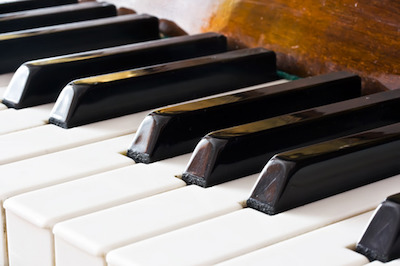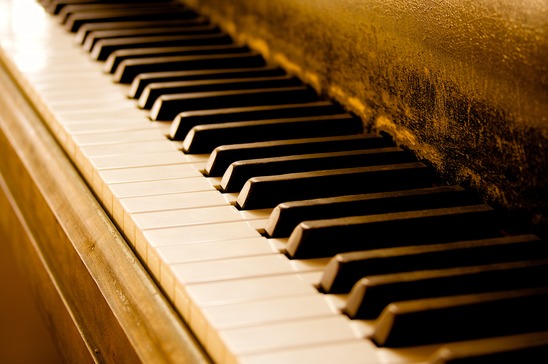Looking at a piano, the keyboard can be a bit intimidating. If you sit at an acoustic piano, the black and white keys seem to go on forever. How do you know which one to tap? Which key do you push when you look at a sheet of music?
How are you ever going to figure all of this out?
Actually, it’s not as frightening as it may seem.
A standard keyboard has 88 keys. Yet it’s not exactly 88 separate notes; instead, it’s a series of repeating groups of 12 notes that are repeated over and over again. 
Take a look at a keyboard and notice how the keys are displayed. You’ll see the black keys are grouped together in two’s and three’s. This separates the white keys into the appropriate pattern. Every twelve note pattern (there’s seven of them on an 88 key keyboard) repeats over and over again as you move up the keyboard. Every 12 note pattern consists of a group of two and three black key patterns, and the 7 white keys that surround them. Rinse and repeat.
That should make your keyboard a little less intimidating.
Now let’s find your starting point. When you hear people talking about playing, you’ll invariably hear them mention Middle C.
The C note is always to the left of the two black key pattern on your keyboard. You can take a moment and find all 8 of them on an 88 note keyboard. Don’t forget the highest C, which is always the last white key to the right.
Middle C is the C note residing almost in the center of your keyboard. No matter how many keys a keyboard has, this is always the pattern. Middle C is your starting point. When you start lessons, you’ll often hear teachers call it “first position” or “number one”.
All of your music will be based from Middle C on.
Feeling a bit more comfortable with the keyboard? Realizing it’s just a series of patterns can help you with your approach.


 Ivory is a substance that comes from tusks of elephants and a few other types of animals, such as walrus. When ivory was considered a precious material used in all types of trade, including pianos, elephants were hunted down exclusively for their tusks. As the problem was exposed and the plight of the elephant came into consciousness, manufacturers quickly made the decision to change the materials used in production.
Ivory is a substance that comes from tusks of elephants and a few other types of animals, such as walrus. When ivory was considered a precious material used in all types of trade, including pianos, elephants were hunted down exclusively for their tusks. As the problem was exposed and the plight of the elephant came into consciousness, manufacturers quickly made the decision to change the materials used in production.
